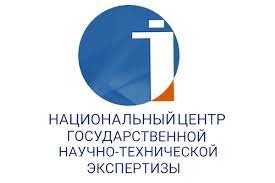SCIENTIFIC AND PRACTICAL PROBLEMS OF AUTOMATION OF THE KAZAKH ORTHOGRAPHY THROUGH THE METHOD OF MODELING
https://doi.org/10.55491/2411-6076-2024-2-172-181
Abstract
The rapid development of digital technologies, including the emergence of the Internet, led to a radical change in the communicative landscape of the 20th century. The possibility of constant access to the Internet, as well as the use of applications for the exchange of instant messages online gave an impetus to the formation of a new digital language, the development of a new language environment. Currently, the Kazakh language entered the digital space and the life force of the Kazakh language was formed in the virtual space. In this regard, an inventory of knowledge related to the Kazakh language was carried out and the development of Kazakh language resources in the virtual space was put on the agenda.
Automation of orthography is the process of using computer programs and tools to check the spelling of words in a text. This allows one to automatically correct spelling errors and reduce the time spent on text editing. Innovative functions require the development of a formal language model. And for formal modeling of orthography, first of all, it is necessary to conduct an inventory of knowledge related to orthography, to identify difficulties in spelling. Currently, scientists of the Institute of Linguistics named after A. Baitursynuly are conducting research within the framework of the program-targeted financing project “Automatic recognition of Kazakh text: development of linguistic modules and IT solutions”. As a part of the research, linguistic resources are differentiated and analyzed, allowing to automatically correct errors in word spelling.
The article analyzes in detail the automation of knowledge related to orthography, scientific and practical problems of its automatic representation, modeling of knowledge related to Kazakh orthography, definition of model concepts, common types of modeling, types of modeling used in automation. Also, for the automation of Kazakh orthography, types of modeling using phonetic-phonological and orthographic distinctive signs are proposed, the stages of automation of Kazakh orthography are described.
About the Authors
N. AmirzhanovaKazakhstan
Candidate of Philological Sciences.
Astana
D. Sadyk
Kazakhstan
Corresponding author, Doctoral student.
Almaty
References
1. Algazina N. (1987) Formirovanie orfograficheskih navykov. – M., 1987. – 158 s. [Algazina N. (1987) Formation of orthographic skills. – M., 1987. – 158 p.] (in Russian)
2. Arhangel'skij S.I. (1980) Uchebnyj process v vysshej shkole i ego zakonomernye osnovy i metody. – M.: Vysshaja shkola, 1980. – 368 s. [Arkhangelskiy S.I. (1980) Study process in higher education and its logical bases and methods. – M.: Vysshaya shkola, 1980. – 368 p.] (in Russian)
3. Bazarbaeva Z. (2008) Qazaq tіlі: intonologija, fonologija. – Almaty, 2008. – 284 b. [Bazarbayeva Z. (2008) The Kazakh language: morphology, intonology. – Almaty, 2008. – 284 p.] (in Kazakh)
4. Chomskij N. (2000) Logicheskie osnovy lingvisticheskoj teorii. – Birobidzhan: IP «Trivium», 2000. – 146 s. [Chomsky N. (2000) Logical bases of linguistic theory. – Birobidzhan: IP «Trivium», 2000. – 146 p.] (in Russian)
5. Ermilova V., Ermilova D. Ju. (2001) Uchebnoe posobie dlja uchrezhdenij srednego profobrazovanija. – M., 2001. – 184 s. [Yermilova V., Yermilova D. Yu. (2001) A manual for secondary education institutions. – M., 2001. – 184 p.] (in Russian)
6. Lakoff G. (1996) Kognitivnoe modelirovanie. – Jazyk i intellekt. – M., 1996. – S. 143-184. [Lakoff G. (1996) Cognitive modeling. – Language and Intelligence. – M., 1996. – pp. 143-184]. (in Russian)
7. Martin K. (2000) O modelirovanii lingvistiki – M., 2000. – 258 s. [Martin K. (2000) On modeling linguistics. – M., 2000. – 258 p.] (in Russian)
8. Uali N. (1993) Qazaq grafikasy men orfografijasynyng fonologijalyq negizderi: filol. gyl. kand. avtoref. – Almaty, 1993. – 162 b. [Uali N. (1993) Phonological basics of Kazakh graphics and orthography: philol. science. kand abstract. – Almaty, 1993. – 162 p.] (in Kazakh)
9. Vartofskij M. (1988) Modeli. Reprezentacija i nauchnoe ponimanie. – M., 1988. – 510 s. [Vartofskу M. (1988) Models. Representation and scientific understanding. – M., 1988. – 510 p.] (in Russian)
10. Zhubanov A. (2012) Qazaq tіl bіlіmі: qoldanbaly lingvistika. – Almaty, 2012. – 696 b. [Zhubanov A. (2012) Kazakh linguistics: applied linguistics. – Almaty, 2012. – 696 p.] (in Kazakh)
Review
For citations:
Amirzhanova N., Sadyk D. SCIENTIFIC AND PRACTICAL PROBLEMS OF AUTOMATION OF THE KAZAKH ORTHOGRAPHY THROUGH THE METHOD OF MODELING. Tiltanym. 2024;(2):172-181. https://doi.org/10.55491/2411-6076-2024-2-172-181
















